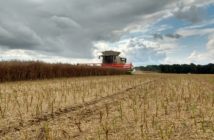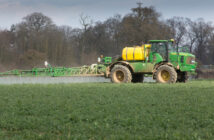Farmers are being urged challenge the norm this spring by changing up fertiliser application timings, in response to current market conditions.
With limited stock and high prices, David Newton, technical manager at Timac Agro UK, says this year is the perfect time to go against the routine and review fertiliser programmes.
“We need to react to the weather, soil conditions and market volatility to make the most out of every kilo of fertiliser,” says Mr Newton,
“This means taking a bespoke approach for each farm, assessing application timings and rates.
“For example, just because you’ve always applied nitrogen in February, doesn’t mean you need to apply the usual dose in the coming weeks. Fertiliser is in short supply, and it may be more suitable to delay applications to bolster yields ahead of the growing season.”
To react to how crops are performing, Mr Newton advises growers carry out regular crop walks.
Mild December
“December was unusually mild for many parts of the country,” he says. “So, for crops that were drilled in good conditions they could be further ahead in growth stages.
“As a result, they may not actually require an early nitrogen boost, in fact this can cause vulnerable growth, this is where useful savings can be made without impacting yield.”
For some growers, he notes hard frosts throughout January may have caused stress to crops. “This is a critical time for early season yield establishment and could impact crop performance. Here, I would recommend using an early application biostimulant, which can support the crop by enhancing rooting and tillering. In turn, this will encourage early nutrient absorption, so you’re making the most of every kilo of nitrogen applied.”
Looking ahead, Mr Newton recommends using this year to review what crop nutrition products are being used and when applications are being made.
“We need to be applying products which are both feeding crops when they need it and improving their ability to take up nutrients. Don’t be afraid to question your use of nitrogen and phosphate and, if you’re making applications consider the most suitable form and only apply to the crops that have requirements.
“When challenged with availability and prices, it’s the perfect time to take stock and evaluate where changes can be made to improve efficiency and efficacy of applications, while maintaining yields at harvest,” he concludes.




